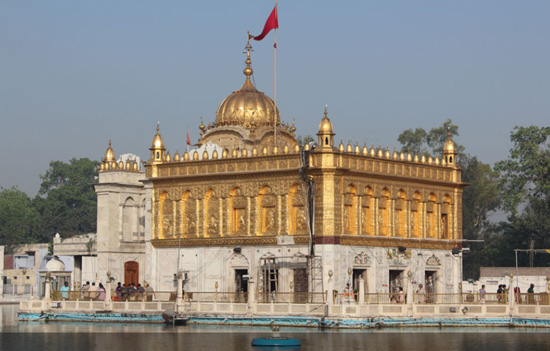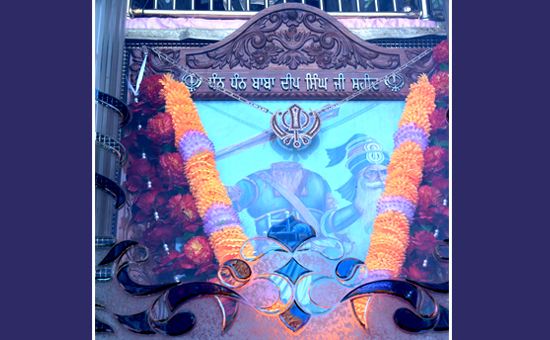- How did Jaats become
powerful? Why Punjab needs a non-Jaat Chief Minister, someone who has a vision
to make state prosperous again, look beyond vote-bank politics/subsidy and
addresses genuine concerns of all sections of society.
Did you know that the founder of the
Bahujan Samaj Party founder Kanshiram was a Ramdasia Sikh? He chose to pursue a
social revolution in Uttar Pradesh (former Chief Minister Mayavati was his
protege) but not his home state Punjab!
Actually, from the time the state of Punjab was formed in 1966, it probably
had only two non-Jaat chief ministers i.e. Giani Zail Singh (from the carpenter
community of Ramgariya Sikhs) and Charanjit Channi (from the Chamar community
of Ramdasia Sikhs). Chamars are followers of Sant Ravidas.
Inspite of being only about 20% of Punjab’s population against the backward classes of about 30%
the Jaat Sikhs assume a share of power i.e. disproportionate to their
population. Most farmers are Jaat Sikhs and thus a big recipient of free power,
that was introduced by the Akali government in 1997-98, and central government
subsidy.
The powerful Shiromani Gurdwara
Prabandhak Community (SGPC) that controls all gurdwaras in undivided Punjab (barring
Haryana) is indirectly controlled by the Akalis because it derives substantial
support from Jaat Sikhs.
Across parties, every chief minister has
to be a Jaat Sikh. One hoped Aam Aadmi Party (AAP) would think differently but
they too succumbed and appointed a Jaat Chief Minister. The reality is that
most Chief Ministers are focused on the most powerful and fellow community in
the state.
At the outset I must state that I have nothing personal against the Jaat Sikh community but some things needs to be told. In fact I admire the 1960’s generation for their contribution to the Green Revolution. This article seeks to provoke thought and not cast aspersions on any community or people.
So the question is, were Jaats always so
powerful in Punjab?
The answer is No. The ten Gurus were
Khatris (simply Kshatriyas). Guru Nanak was a Bedi, Angad a Trehan, Amar Das a Bhalla and the rest were Sodhis. Jaats came into prominence with Maharaja Ranjit Singh’s rule.
I wonder if this Jaat desire to control Sikh religious affairs is because they hold a grudge against the Khatri community because the Khatris deprived them of the Guru gaddi. “Baba Buddha, a Jaat, was made to do tilak of gurus but was never assigned the supreme religious position,” says a scholar from Punjab.
Further,
Jaat differences with Bhapas (Khatri-Arora Sikhs) also arise because Jaats see
themselves as the original followers of Khalsa (founded by the tenth Guru in
1699) as against the Bhapas who were later entrants into Khalsa. What they
forget is that there were nine Khatri Gurus before and including the tenth.
 Durgiana Mandir Amritsar was made around 1925 and is a replica of Hari Mandir.
Durgiana Mandir Amritsar was made around 1925 and is a replica of Hari Mandir.
So how did the Jaat Sikhs become such a
powerful community in Punjab?
Initially, the Khalsa followers were
mostly Jaats (were considered low caste then). Though others considered
themselves Sikhs, they held back since they were not followers of Khalsa. The
birth of Khalsa resulted in the rise of Jaat power in Punjab. Khalsa was raised
to fight Mughal oppression and persecution of Hindus and Sikhs (who then were
considered part of the larger Hindu community).
They got more known with the advent of the Maharaja Ranjit Singh’s rule and victories against the Afghans. Further, the British were grateful to the Sikh princes for assistance received during the mutiny of 1857 and seeing the bravery of Sikh armies realised, that they could be an effective buffer between Afghanistan and India.
Thereafter, British made caste the basis
of land ownership and tacitly supported the division of Punjab into Sikh and
Hindu. Also read How
the British Divided Punjab into Hindu and Sikh
The British wooed the Jaats so, “The area specifically chosen for the Sikhs was a tract known as nili bar, irrigated by the Chenab canal. Colonization officers scoured Sikh villages in the districts of Amritsar, Ludhiana and Ferozpur to pick up the best farmers. The settlers were given heritable and inalienable rights of occupancy. The vast majority of Sikh colonists were Malwa Jats with a sprinkling on non-Jat agricultural tribes."1 Pg
118
The caste divide was created in the
Indian Army too. A Jaat Sikh regiment and a Sikh Light Infantry for Mazhabi
Sikhs were created.
Another reason for rise in their power
was that Jaats controlled SGPC since its inception in 1925. Plus, barring two every
Chief Minister of Punjab, since the state was formed in 1966, has been a Jaat
Sikh.
Thus, the Jaat Sikh
community became powerful by virtue of being land owners-farmers, political
power and control over Sikh religious affairs.
Another view by Prof Harish Puri is, “The large scale entry of the Jats by the time of the Sixth Guru, tended to alter the caste equation in the Panth. The Jats constituted the rural elite who dominated the rural Punjab. By the 18th century the Jat constituency was preponderant among the constituent groups in the Panth (McLeod 1975: 10).” 2
Jaat Sikhs have disputes for e.g. between themselves on land but stand united when a third party is involved as we saw during the farmer’s agitation. They are both nationalists and separatists (biggest proponents of the Khalistan Movement). Clan loyalty is strong within India and Pakistan Punjab. Perhaps i.e. why Navjot
Sidhu embraced General Bajwa (a Punjabi Jat Muslim) during a visit to Pakistan.
 Lakhpat Gurdwara Kutch, Gujarat. Guru Nanak and son Baba Sri Chand.
Lakhpat Gurdwara Kutch, Gujarat. Guru Nanak and son Baba Sri Chand.
So what is the
present?
The powerful Jaat
Sikhs have not paid adequate attention to all sections of society.
Thus, a devoted Khatri Sikh laments, “SGPC definitions of a Sikh make Sehajdharis, Patits and non-Amritdharis second class Sikhs because they are unable to be elected to the SGPC management but are duty bound by its rules and expected to contribute money and labour (sewa).” A 2016 amendment disentitled Sehajdharis from voting in the elections of
SGPC and managing committees.
Most agricultural land is owned by Jaat Sikhs. Dalits own only 3.5 per cent of Punjab’s private farmland, according to the Agriculture Census of 2015-16.
A lot is made
about the rising popularity of Deras that essentially attracts followers from
the poorer, backward and non-Jaat sections of society.
I earlier wrote, Why Dera Sacha Sauda
draws followers . Here is an excerpt, “The Green Revolution of the late 1960s benefited Jaats the most as they were the dominant agricultural caste. In the prosperity that followed, the backward classes and poor were left out. To add to their woes was the insecurities caused by the extremely violent Khalistan movement of the 1980s. Deras existed earlier too, but the external environment increased the insecurity. The need for a support system and to be part of a larger community was felt. It is this vacuum that deras like Sacha Sauda filled. They made the poor feel secure, cared for, loved, provided a support system and gave them dignity.”
Read
in Tribune Chandigarh Why Dera Sacha Sauda attracts such a huge
following
Those who state castes
do not exist in Sikh Panth must hear this video of senior journalist Shekhar Gupta and read my article Caste in Sikhs
 Baba Deep Singh, head cut off in fight with Jamal Khan. Holding head in hand he reached Hari Mandir.
Baba Deep Singh, head cut off in fight with Jamal Khan. Holding head in hand he reached Hari Mandir.
Further, the backwards e.g. chamars are not treated well. According to a Punjab based scholar, “They are considered pariahs in all matters. Sikhs generally used the epithet Sant for Ravidas, denying him the status of Guru, which they kept only for their own ten gurus. While Ravidasis take pride in being chamars (as did their guru) Sikhs continue to consider chamars as low caste. Inter-dining, intermarriage between two communities is still not accepted, although the elite among them enjoys a better social status by virtue of their political or economic power.” Rajput
Queen Meerabai was a follower of Sant Ravidas.
Ajoy D wrote in The Wire, “Their crematorium, gurdwara and even the playground is separate from that of the Jat Sikh families. There aren’t any water pipelines running through their colonies while there is an abundance of water in the lands owned by the Jat Sikh families.” Dalit issues take centre stage in
Punjab but Jaat Sikhs continue to
dominate political dialogue
Today, when one says Deras are a threat to Sikhism, it means they are a
threat to Akali Dal controlled SGPC.
The SGPC (that
was created to manage Gurdwaras in Punjab) has assumed the role of spokesperson
of the Sikh Panth.
Also read Is SGPC trying to become a
Sikh Vatican
Thus, SGPC expresses
disapproval of Sant Ravidas or any other living Guru for e.g. Nirankaris.
“The Nirankaris believe in the formless God-Nirankar-who can be reached through a “God-realised soul” or “satguru”. Trouble began in 1951, when Satguru Avtar Singh proclaimed himself a living guru in the presence of the Adi Granth (the Sikh holy book, which is considered to be a living Guru).” ThePrint Rivalry
between Sikhs and Nirankaris is nearly a century old
The cause of differences between orthodox Sikhism and Nirankaris are limited to the latter’s worship of gurus other than the ten gurus recognized by Sikhs. They also disapprove of militant Khalsa. 1 Pg. 125
As a Punjabi Khatri, I believe that no
current Guru should compare himself with the respected Ten Gurus. If your
thoughts and karmas are good,
devotees will follow you as we see with modern day Gurus.
On the
Ravidasias note this Indian
Express report, “An attack in 2009 during a religious congregation in Vienna, which the current chief of the Dera Sant Niranjan Das survived, but in which one of the sants was killed, became a watershed moment. In Varanasi, on the birth anniversary of Guru Ravidas in 2010, the Dera and its sants declared Ravidassia as a new religion.”
Ravidassias believe in Ravidasia Dharm.
It is a Panth, like there have been many in India. “Dera Sachkhand or Dera Ballan has emerged as a major centre for the articulation of the Ravidassia identity in Punjab.”
So let us stop assuming that SGPC represents the entire Sikh community?
Unless Punjab has a Chief
Minister who is able to look beyond his community/vote bank politics, carry all
sections of the society with him/her, stop appeasing whilst addressing genuine
concerns and break the stranglehold of the SGPC over Sikh affairs, my beloved
home state is bound to die and conversions will be rampant. Punjab needs social
reform.
It is resident Punjabis who
have to take the lead, the Centre can do that much! A better version of
Mayavati needs to rise in Punjab.
References
1. History of Sikhs by Khuswant Singh
2. The Scheduled Castes in the Sikh Community – A Historical Perspective by Prof Harish K Puri. [First published in Economic & Political Weekly (28 June 2003) and was then included in the author’s edited volume on Dalits in Regional Context (2004)
3. Punjab
Jaat Sikhs and their political dominance
4. Understanding
Dalit demography of Punjab
5. The
Jat: The backbone of Punjab
To read all articles
on Sikh History